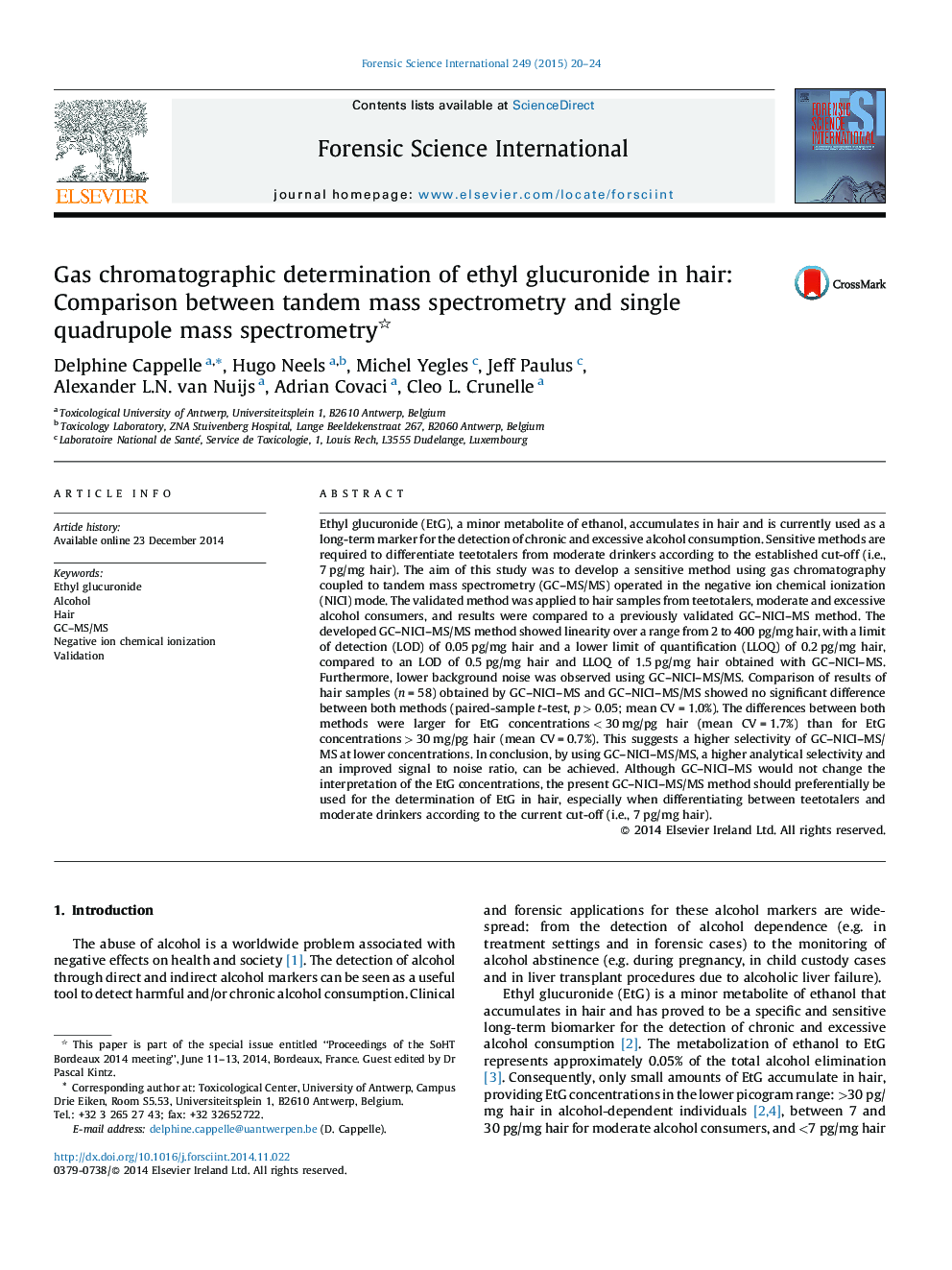| کد مقاله | کد نشریه | سال انتشار | مقاله انگلیسی | نسخه تمام متن |
|---|---|---|---|---|
| 95398 | 160429 | 2015 | 5 صفحه PDF | دانلود رایگان |
• A GC–NICI–MS/MS method for the detection of ethyl glucuronide in hair was developed.
• The GC–NICI–MS/MS method was applied to hair samples.
• The GC–NICI–MS/MS method was compared to a GC–NICI–MS method.
• Using the GC–NICI–MS/MS method a better selectivity was achieved.
• Using the GC–NICI–MS/MS method a lower background noise was achieved.
Ethyl glucuronide (EtG), a minor metabolite of ethanol, accumulates in hair and is currently used as a long-term marker for the detection of chronic and excessive alcohol consumption. Sensitive methods are required to differentiate teetotalers from moderate drinkers according to the established cut-off (i.e., 7 pg/mg hair). The aim of this study was to develop a sensitive method using gas chromatography coupled to tandem mass spectrometry (GC–MS/MS) operated in the negative ion chemical ionization (NICI) mode. The validated method was applied to hair samples from teetotalers, moderate and excessive alcohol consumers, and results were compared to a previously validated GC–NICI–MS method. The developed GC–NICI–MS/MS method showed linearity over a range from 2 to 400 pg/mg hair, with a limit of detection (LOD) of 0.05 pg/mg hair and a lower limit of quantification (LLOQ) of 0.2 pg/mg hair, compared to an LOD of 0.5 pg/mg hair and LLOQ of 1.5 pg/mg hair obtained with GC–NICI–MS. Furthermore, lower background noise was observed using GC–NICI–MS/MS. Comparison of results of hair samples (n = 58) obtained by GC–NICI–MS and GC–NICI–MS/MS showed no significant difference between both methods (paired-sample t-test, p > 0.05; mean CV = 1.0%). The differences between both methods were larger for EtG concentrations < 30 mg/pg hair (mean CV = 1.7%) than for EtG concentrations > 30 mg/pg hair (mean CV = 0.7%). This suggests a higher selectivity of GC–NICI–MS/MS at lower concentrations. In conclusion, by using GC–NICI–MS/MS, a higher analytical selectivity and an improved signal to noise ratio, can be achieved. Although GC–NICI–MS would not change the interpretation of the EtG concentrations, the present GC–NICI–MS/MS method should preferentially be used for the determination of EtG in hair, especially when differentiating between teetotalers and moderate drinkers according to the current cut-off (i.e., 7 pg/mg hair).
Journal: Forensic Science International - Volume 249, April 2015, Pages 20–24
